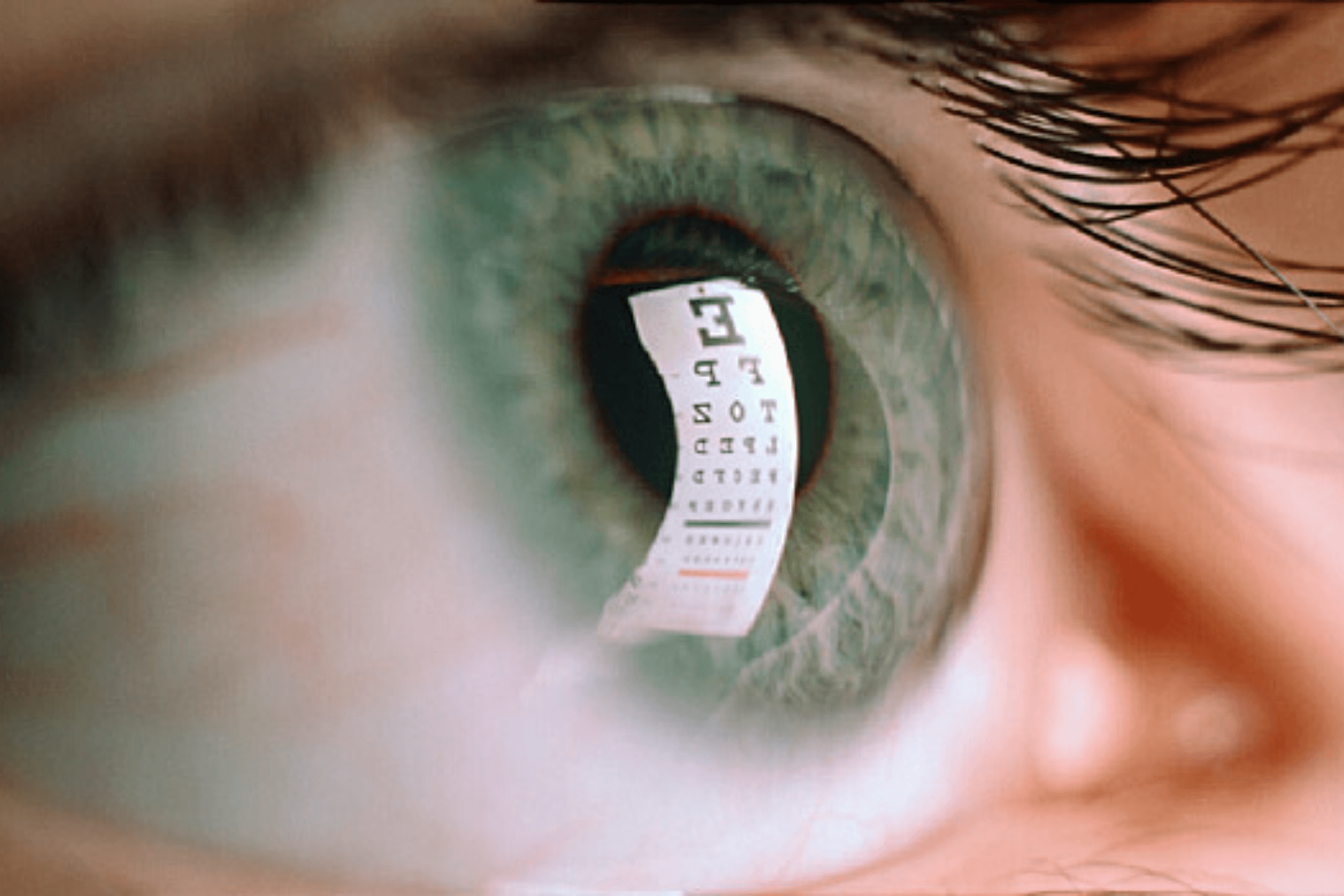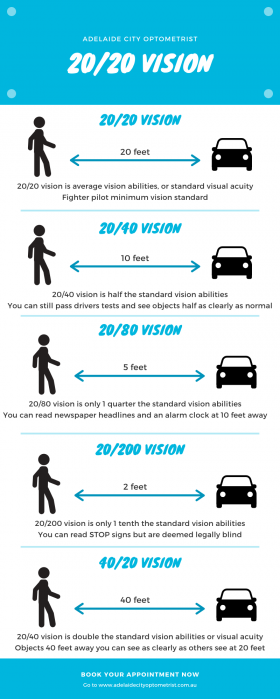
Many of you might not recognise the significance of the year 2020, but to optometrists, it’s the perfect opportunity to begin the discussion on 20/20 vision. 20/20 vision is the standard for “normal” vision. It’s an “Americanism”, referring to a particular line of letters on a standard vision chart. Only 35% of adults can see 2020 vision without the assistance of glasses or contact lenses.

In Australia we use the metric system instead of the imperial system, therefore 20/20 for us becomes 6/6. 6/6 is the line of letters that “average” vision should be able to achieve without help from lenses. But for some people, this line of letters can take on a whole new meaning, particularly for an “alpha “male. Men, in particular, view the eye test as a personal challenge, a test of their masculinity, their mettle, seen as though an optometrist is testing them to see what they are made of.
Men like to rise to the challenge and give it their all. They are going to read the smallest line of letters on the vision chart if it’s it the last thing they do. If the optometrist congratulates them on having 20/20 vision, what they hear (and tell their friends and partners) is “I have the vision of a fighter pilot”.
This allows them a few minutes to bask in the glow of their achievements with friends, casually mentioning to them over a coffee they could have been a fighter pilot if they had desired to. Some people are so confident of their visual prowess they fail to listen to their Optometrist or anyone else who suggests that they need glasses! Normally this type of eye test goes like this:
Optometrist: So how do you feel about your vision?
Man: “Oh Brilliant. I can literally see for miles. I can see the moon! I ‘ve always had exceptional vision! I could have been a fighter pilot you know, if it hadn’t been for my knees! I’m only here to keep my other half happy “
Optometrist: “Ok that sounds good. Can you please try to read the letters on the eye chart opposite me? “
Man: (squinting) “What chart?”
However, it’s important to put ego aside and think about the health benefits of getting your eye checks regularly. I’m sure most of us have had to come to the realisation at some point that our vision is slowly deteriorating which can easily damage our self-esteem, no matter what gender. But, when looking at the statistic that 50% of all vision loss is preventable with regular eye exams, it seems like it’s a no brainer.
Even if only the smallest script, wearing glasses at a younger age can help deter vision loss and prolong your eye health. Those ages under 30 are recommended to have your eyes checked every 2 years, and after this age have an annual eye review. The smallest changes can help your eye health such as a transition lens, multifocal lenses, blue light filters or small fixes on your astigmatism.
If feeling like it’s been a while since you’ve visited your last optometrist, remember that your eye health can’t improve without getting your vision tested first. So even if you’re worried about what news you may get, remember to book in your next eye examination because who knows how much damage you could be causing without it.
FAQs
What is 20/20 vision?
20/20 vision is a term used to measure visual acuity at a distance of 20 feet. When told you have 20/20 vision, this means you can see objects at 20 feet away, at the clarity they should regularly be seen, at that distance.
What does the term 20/20 mean in vision?
Being told you have 20/20 vision does not mean you have perfect vision. The term 20/20 vision is only an indication of your vision at a distance. It does not take into account other vision skills including peripheral vision, eye coordination, depth perception, refractive errors, color vision and more. Those with 20/20 vision can see objects at a distance of 20 feet away at the regular standard. Those with 40/20 vision can see objects 40 feet away at the clarity which others see at 20 feet away. Those with 20/40 vision can see objects 20 feet away with the clarity that the others see at 10 feet away.
Can you have better than 20/20 vision?
Some people can have better distance vision than 20/20 such as 40/20 vision. If you have 40/20 vision, this means that objects 40 feet away, you can see as clearly as what others who have 20/20 vision can see at 20 feet.
How do you know if you have 20/20 vision?
The only way to find out your visual acuity is by booking an eye test to see your optometrist. Some people may be able to see objects up to 50 feet away clearly, however, are unable to see objects up close. This would be due to hyperopia and would require corrective lenses to fix.
Can you have lower than 20/20 vision?
Yes, vision commonly deteriorates over time. Vision is commonly measured at 20/20, 20/40, 20/80 and 20/200. 20/40 vision is when your vision standards are half the average of a person with normal vision, meaning you can see objects clearly at 10 feet. 20/80 vision is having one-quarter of standard vision meaning you can see clearly up to 5 feet. 20/200 vision is when someone is deemed legally blind meaning they can only see clearly up to 2 feet.
